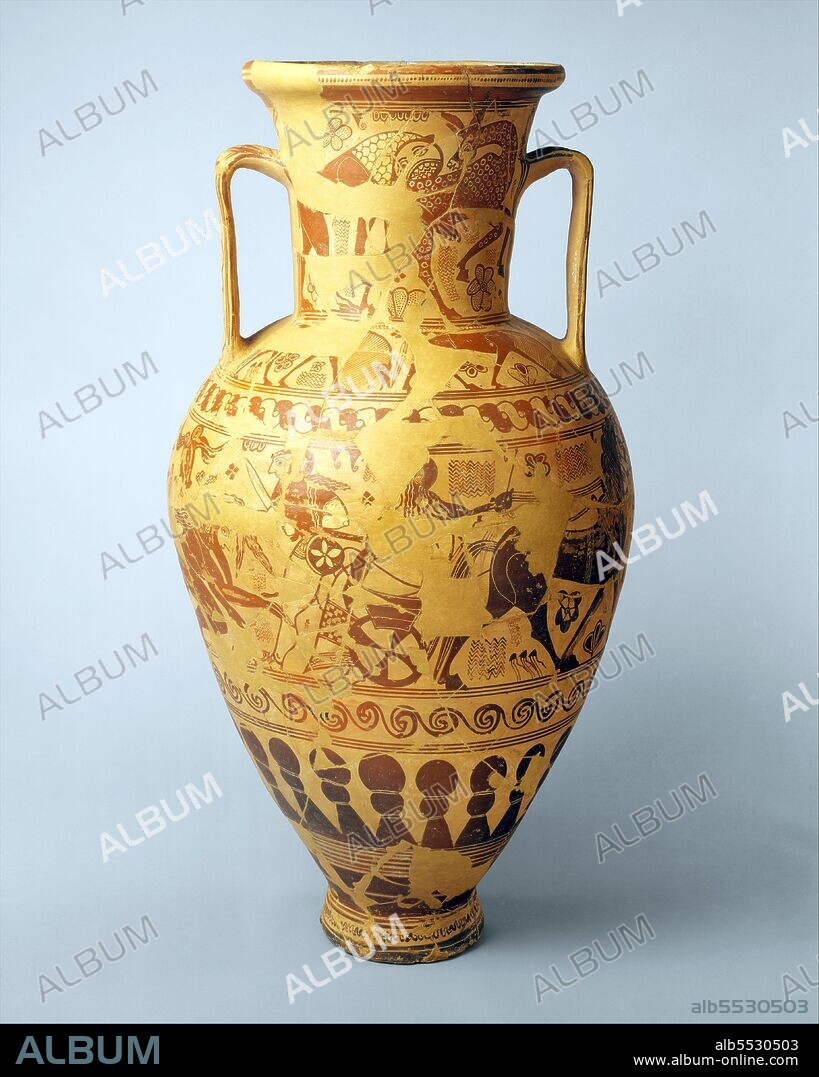alb5530503
Greece: Terracotta neck amphora, Attica, Nettos Painter c. 650 BCE

|
Añadir a otro lightbox |
|
Añadir a otro lightbox |



¿Ya tienes cuenta? Iniciar sesión
¿No tienes cuenta? Regístrate
Compra esta imagen.
Selecciona el uso:

Título:
Greece: Terracotta neck amphora, Attica, Nettos Painter c. 650 BCE
Descripción:
Traducción automática: Un ánfora (plural en inglés: ánforas o ánforas) es un tipo de recipiente de forma y tamaño característicos, que se remonta al menos al Neolítico. Las ánforas se utilizaban en gran número para el transporte y almacenamiento de diversos productos, tanto líquidos como secos, pero sobre todo para el vino. Generalmente es cerámica, pero se han encontrado ejemplos en metales y otros materiales. Para sellar el contenido se utilizaron tapones de materiales perecederos, que rara vez han sobrevivido. Existían dos tipos principales de ánforas: las de cuello, en las que el cuello y el cuerpo se unen formando un ángulo agudo; y el ánfora de una sola pieza, en la que cuello y cuerpo forman una curva continua. Las ánforas de cuello se usaban comúnmente en la historia temprana de la antigua Grecia, pero fueron reemplazadas gradualmente por las de una sola pieza alrededor del siglo VII a.C.
An amphora (English plural: amphorae or amphoras) is a type of container of a characteristic shape and size, descending from at least as early as the Neolithic Period. Amphorae were used in vast numbers for the transport and storage of various products, both liquid and dry, but mostly for wine. It is most often ceramic, but examples in metals and other materials have been found. Stoppers of perishable materials, which have rarely survived, were used to seal the contents. Two principal types of amphorae existed: the neck amphora, in which the neck and body meet at a sharp angle; and the one-piece amphora, in which the neck and body form a continuous curve. Neck amphorae were commonly used in the early history of ancient Greece, but were gradually replaced by the one-piece type from around the 7th century BCE.
Crédito:
Album / Pictures From History/Universal Images Group
Autorizaciones:
Modelo: No - Propiedad: No
¿Preguntas relacionadas con los derechos?
¿Preguntas relacionadas con los derechos?
Tamaño imagen:
3700 x 4624 px | 48.9 MB
Tamaño impresión:
31.3 x 39.1 cm | 12.3 x 15.4 in (300 dpi)
Palabras clave:
ALFARERIA • AMPHORAS • ANFORA • ÁNFORAS • ARCILLA • ART • ARTE • ARTES • ATICA • CERÁMICA • CERÁMICO • EPOCA HELENISTICA • ESCRITURA GRIEGA • FOTOGRAFIA • GRECIA • GREEK • GRIEGA • GRIEGAS • GRIEGO • GRIEGOS • HELENICO • HELENISTICO • NETTOS • OBJETO DE ARCILLA • OBJETO DE CERAMICA • PINTURA • TERRACOTA • TERRACOTTA
 Pinterest
Pinterest Twitter
Twitter Facebook
Facebook Copiar enlace
Copiar enlace Email
Email
